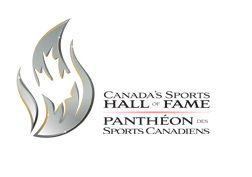Home | Major Sporting Events | Brier
Brier Athletes
PreviousNext
The first skip to win three Brier titles, Ken Watson was one of curling's premier athletes throughout the 1930's and 1940's. Nicknamed 'Mr. Curler', he enthusiastically promoted the sport and wrote books to improve technical and strategic aspects of play. Watson emphasized the importance of 'mental attitude' in competition and "the psychology of team play," urging curlers to learn from failures and to play with optimism and self-confidence rather than conceit when they were winning. According to Watson, success in curling came from teamwork built on "co-operation, tolerance, and mutual respect..." He also praised the efforts of ordinary curlers who promoted these values in amateur clubs across Canada, hailing their "unselfish devotion to building up the wonderful spirit of sportsmanship" in the everyday fabric of the nation. Watson, a school teacher, was also the person credited with the start of schoolboy curler in the late 1940's that eventually led to the Canadian Junior Men's Championship.
Many Brier champions that followed Watson also recognized great teams were built from sportsmanship that came from experiencing failure as well as success. Matt Baldwin, who represented Alberta five times in the Brier (winning three times) and won in 1957 after an undefeated run asserted that winning built self confidence, but he indicated losing "was in some cases the best thing that happened to you" because it taught resilience and gave athletes opportunities to learn from mistakes and improve. Ron Northcott, who won three Brier titles and World Championships in 1966, 1968, ad 1969, similarly noted curling rinks often had "to lose together before you can win together."
Many Brier athletes mastered curling's mental and physical challenges as individuals and as team members, setting thrilling records on the ice and winning multiple championships. Their dedication to fellowship and teamwork as well as competitive excellence at the Brier raised the profile of curling as a national sport in Canada.
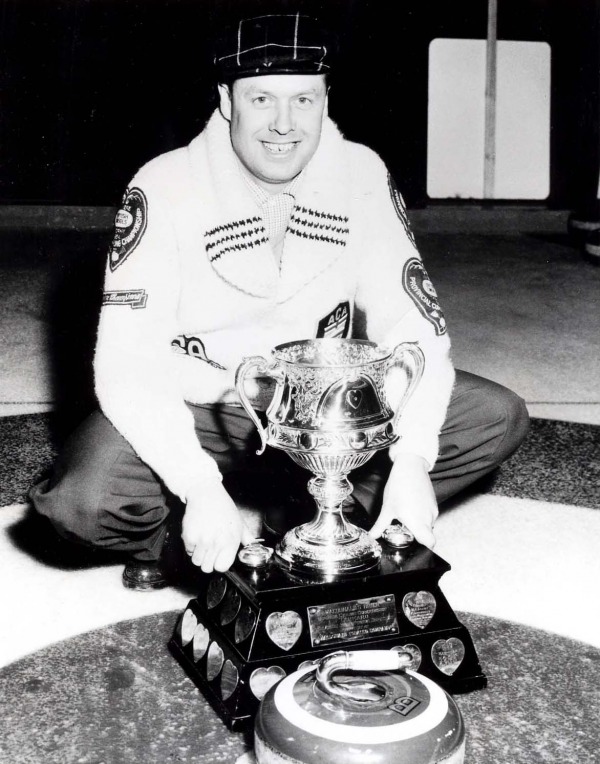
Matt Baldwin was the youngest skip to win a Brier when he won his first in 1954. "Even as a kid growing up in Saskatchewan, all I thought about was the Brier. To get there gave me goose bumps." With this first win he established himself as one of the top curlers, showing his competitive nature and his confidence in his ability.
Collection: Canada's Sports Hall of Fame
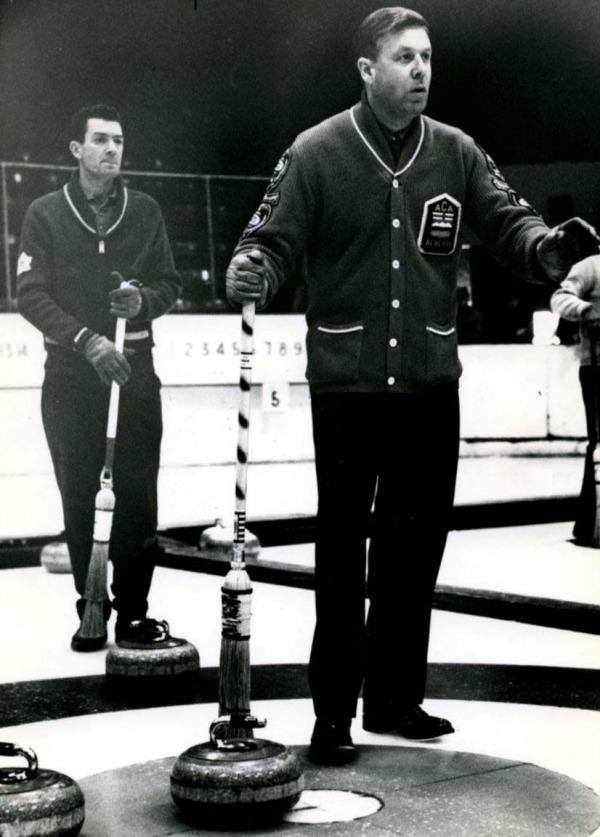
Matt Baldwin made the Brier more exciting to watch by his boisterous and energetic style at a time when curling was considered to be a quiet, gentlemanly sport. The bigger the crowd, the bigger he played. His passion for curling changed the sport.
Collection: Canada's Sports Hall of Fame
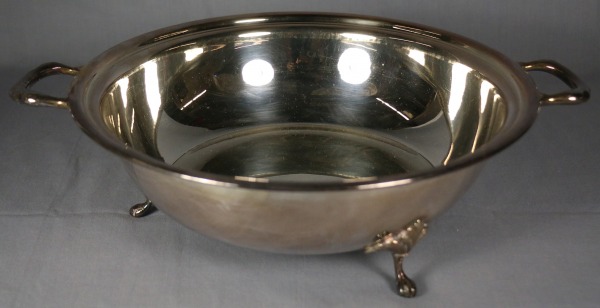
Leadership was another quality of Matt Baldwin, as he led his teams to three Brier championships. He was known as a shot maker and for his long slide delivery. He was also known for his gregarious nature, sharing his enjoyment of the game with everyone.
Collection: Private Collection: Matt Baldwin
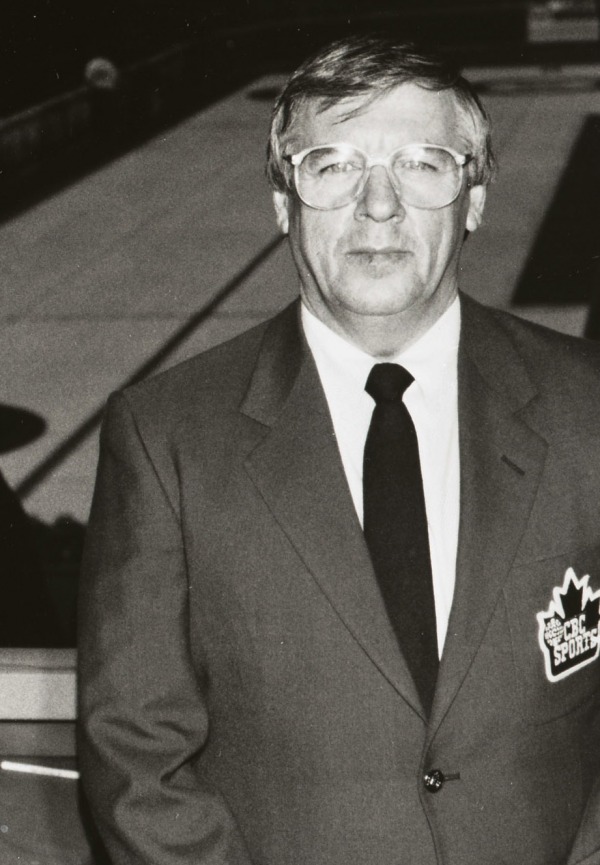
Don Duguid had a successful career after his athletic competition as a TV commentator. He covered numerous Brier competitions and 5 Olympic Winter Games. He pioneered many innovations as a broadcaster, including putting a mic on the players so the audience could hear the skip call the shots. He enjoyed being able to touch his audience and have them enjoy the game he loved.
Collection: Canada's Sports Hall of Fame
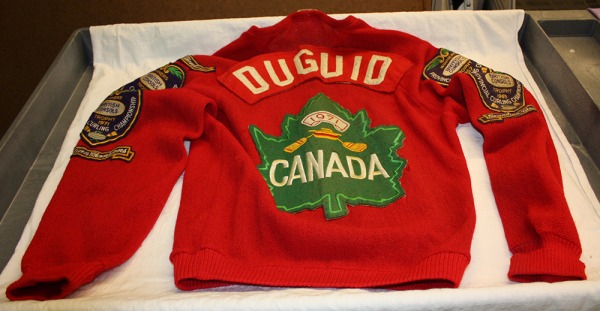
Don Duguid was a highly competitive player winning three Briers and two World Championships. One of the highlights of his career was to go undefeated at the 1971 Worlds. He was a proud representative for curling and Canada.
Collection: Canada's Sports Hall of Fame
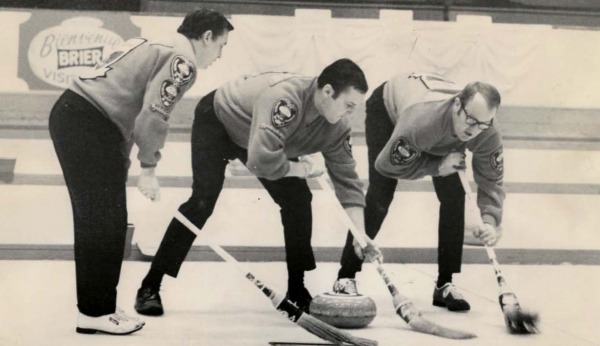
Don Duguid invented what is known as the Manitoba tuck delivery and perfected it over the years. Young curlers today are still using it. His strong sense of community led him to mentor players by coaching at curling schools.
Collection: Canada's Sports Hall of Fame
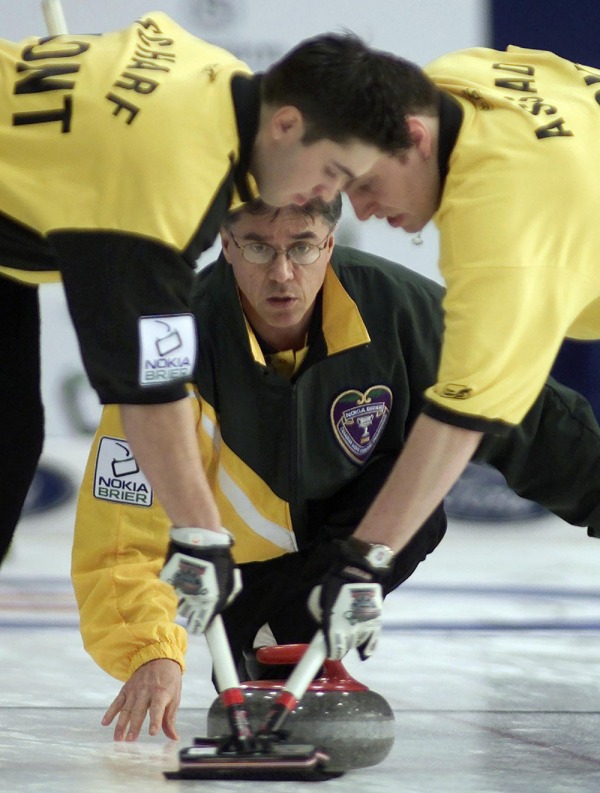
Known as "the Iceman", Al Hackner from Thunder Bay, Ontario skipped his teams at nine Briers, winning in 1982 and 1985. Hackner was noted for his discipline and ability to focus. "I used to love to practice. I just wanted to be the best I could. I didn't have any goals other than that."
Collection: CP PHOTO/Tom Hanson
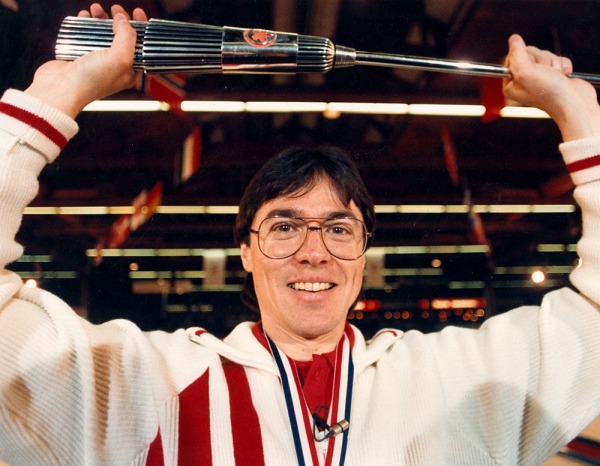
Al Hackner started curling at age 14 when he became passionate about his sport. His two Brier wins and two World Championships by the age of 31 came from his intense desire to win and his ability to make the big shot under the most difficult circumstances.
Collection: Michael Burns Photography
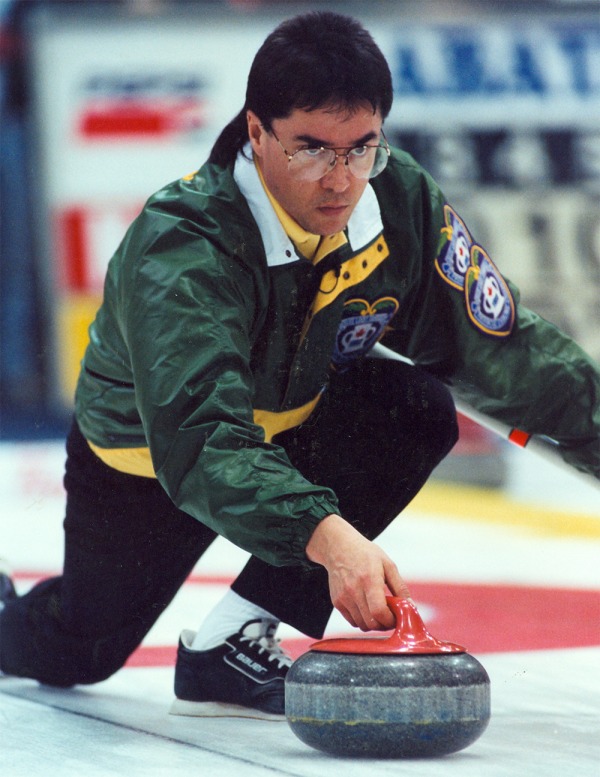
One of the greatest shots in Brier history was made by Al Hackner at the Brier. He made a double take out, removing two of his opponent's stones to even the match and then went on to win in a display of confidence in a pressure situation.
Collection: Michael Burns Photography
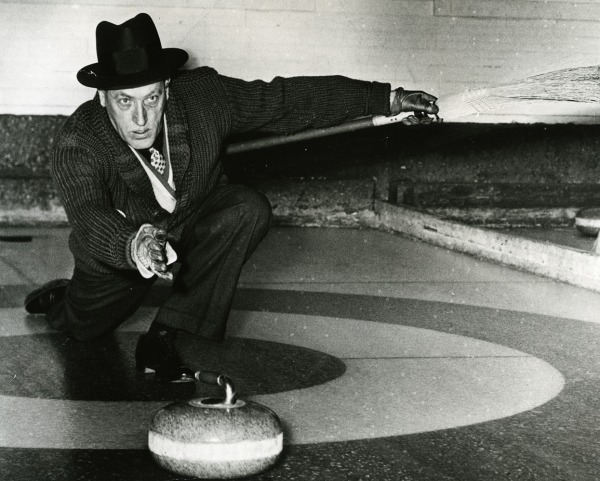
Ken Watson was an innovative strategist when it came to the game of curling. He helped develop the sliding delivery and was an exponent of the draw game. He was a mentor through his writing and his teaching and helped other curlers to learn the sport and like him, to excel in it.
Collection: Canada's Sports Hall of Fame
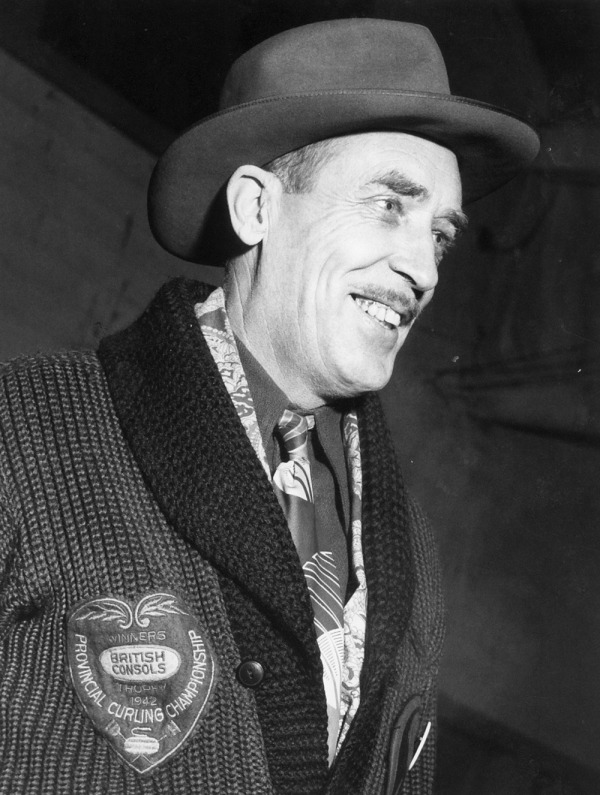
Ken Watson was not only a great curler he was a strong administrator for the game and helped it to grow. He was also visionary when it came to promoting the sport by helping to establish the Scotch Cup, which was then a match between Canada and Scotland. This was the fore runner to the Men's World Curling Championships.
Collection: Canada's Sports Hall of Fame
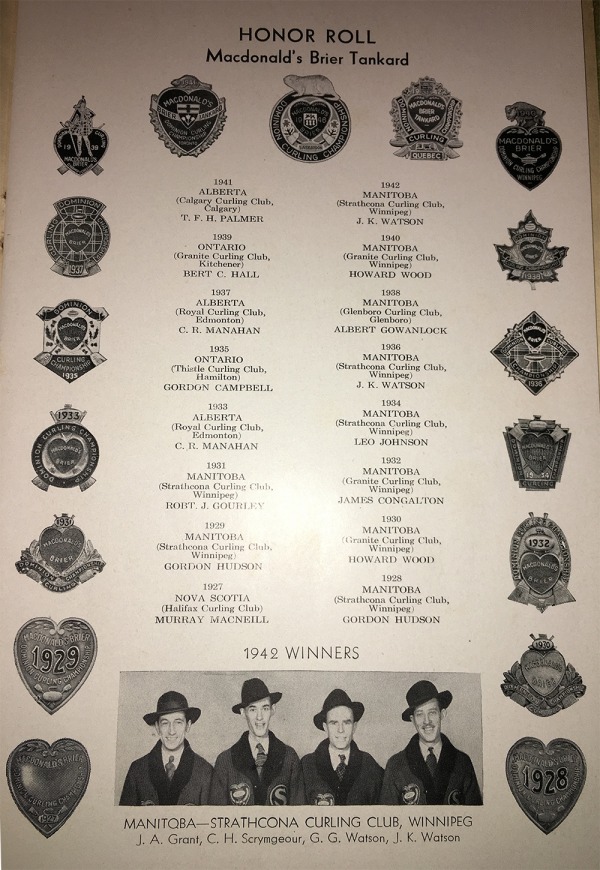
This Honour Roll lists the names of the teams who won the Brier between 1927 and 1942. Ken Watson's name is on it twice, with a third Championship to come in 1949. He was a competitive player and the first to win three Briers.
Collection: Canada's Sports Hall of Fame
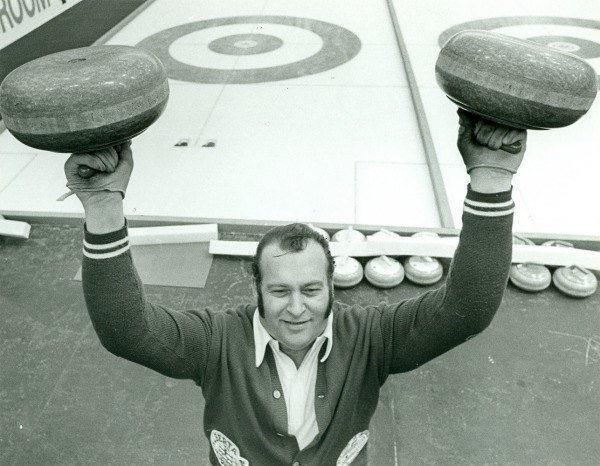
Hector Gervais, "The Friendly Giant", was a friendly man off the ice. When he was playing he was highly competitive and hated to lose. "When he decided to win, no one could beat him".
Collection: Canada's Sports Hall of Fame
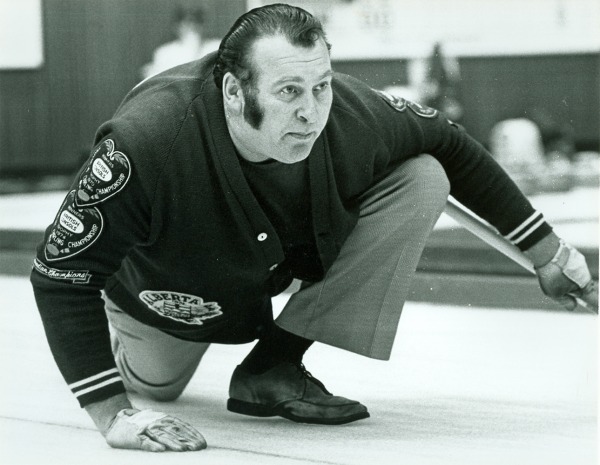
Hector Gervais skipped his teams to two Brier wins and a World Championship. Despite being a large man Gervais was noted for his light touch. He is given credit for revolutionizing the game in the 1960's with placing guards in front of the rings and drawing around rocks for protection. He was known for his strong sense of community and leadership.
Collection: Canada's Sports Hall of Fame
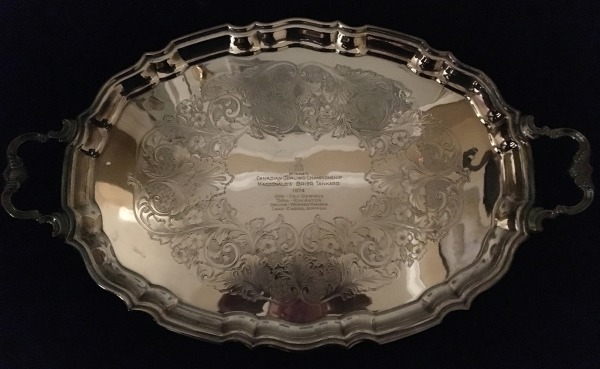
The silver bowl is engraved with the names of the winning Brier team from 1974 including Warren Hansen. For Warren winning was the pinnacle of his career: "Probably from the time I was 14 years old I dreamed of one day hosting the Brier Tankard... (when) we won ... the feeling of relief and final satisfaction was overwhelming".
Collection: Private Collection: Warren Hansen
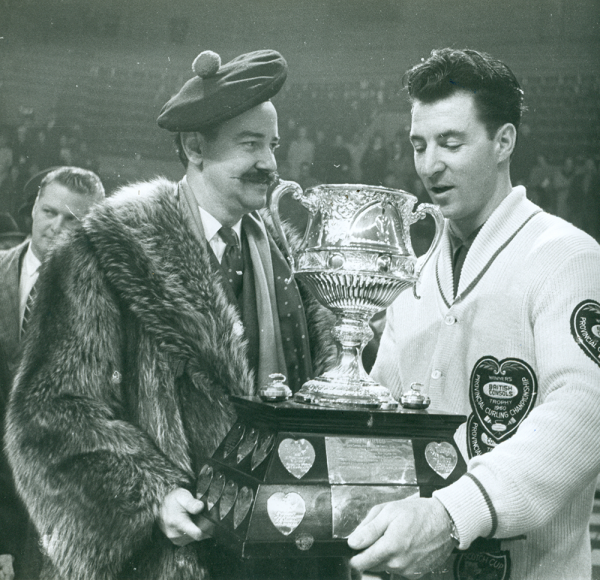
The original Richardson rink from Saskatchewan was made up of brothers Ernie and Garnet (Sam) and their cousins Arnold and Wes. As a team they played as a unified whole, playing to each other's strengths. Ernie as the skip led the team to 4 Brier championships. He was known as a fair man who loved to win.
Collection: Saskatchewan Sports Hall of Fame and Museum
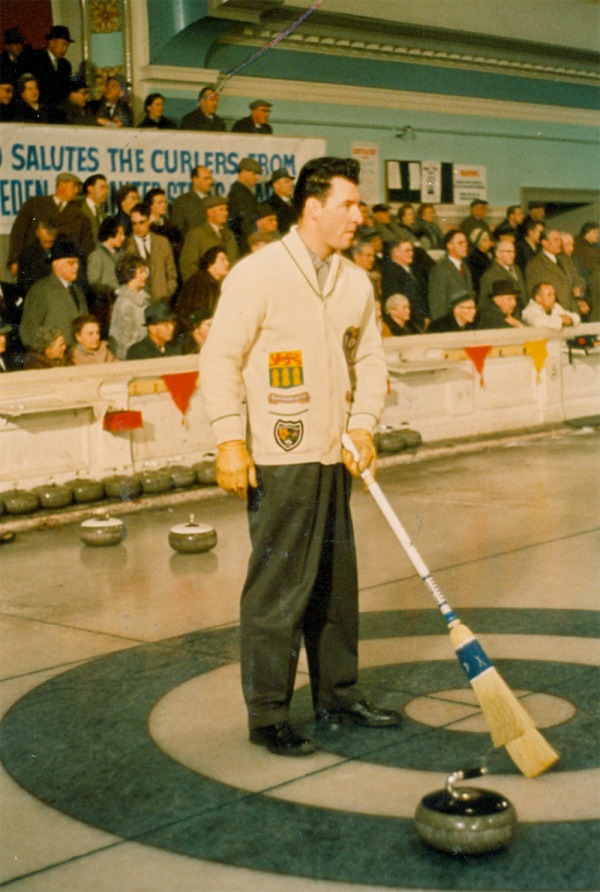
Ernie Richardson created a style of play that emphasized hitting without losing the strategic importance of drawing. His ability to move the game up a notch spoke to his focus and discipline as a player.
Collection: Canada's Sports Hall of Fame
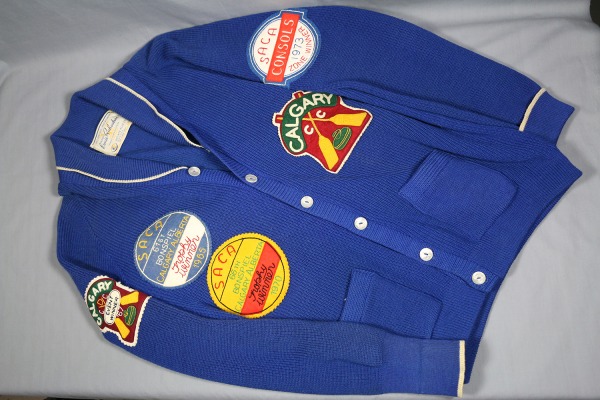
The Richardson team started curling when they were in their 20's. Confident that they were going to reach the Brier, they were soon winning many bonspiels and trophies. They showed their commitment not only to each other but to the curling community as a whole.
Collection: Private Collection: Larry Wood
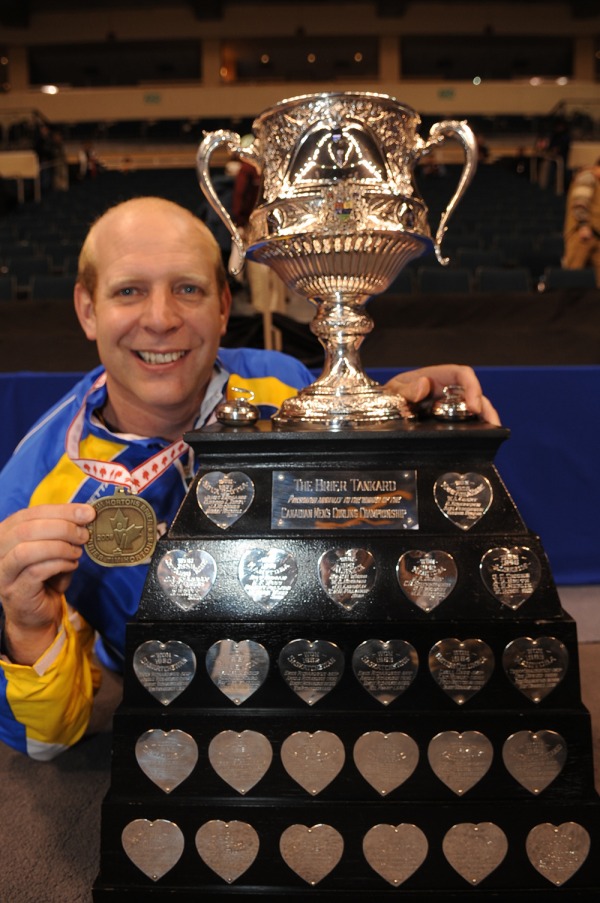
Not many curlers can boast of four Briers, one World Championship and two Olympic medals on their resume. Kevin Martin finished an astounding career when he skipped his team to the Gold medal at the 2010 Olympic Winter Games in Vancouver. Considered by many to be the best curler of all time, he is well respected as a top competitor for his excellence and will to win.
Collection: Michael Burns Photography
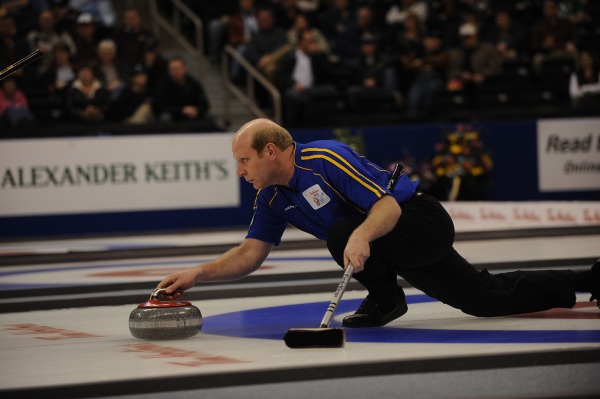
Nicknamed "the Old Bear" and "Kmart", Kevin Martin is known for his leadership both on and off the ice. During his career he was a major influence on the sport, helping to establish highly competitive new events such as the Grand Slam series.
Collection: Michael Burns Photography
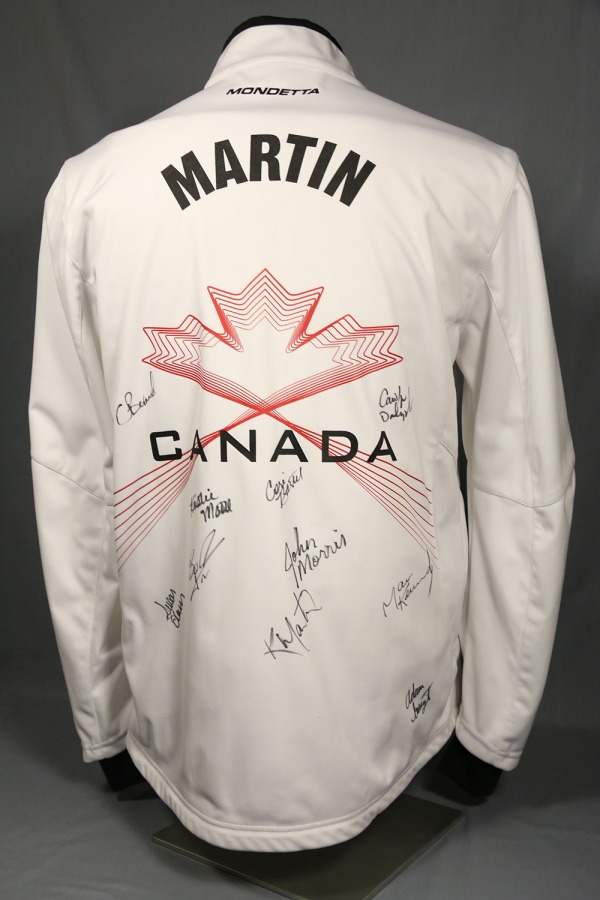
Kevin Martin's team jacket is signed by both the Canadian men's and women's curling teams who participated in the 2010 Olympic Winter Games. When he wasn't playing a game Kevin was there to cheer on the Canadian team, showing his true sense of community and pride in his country.
Collection: Canada's Sports Hall of Fame
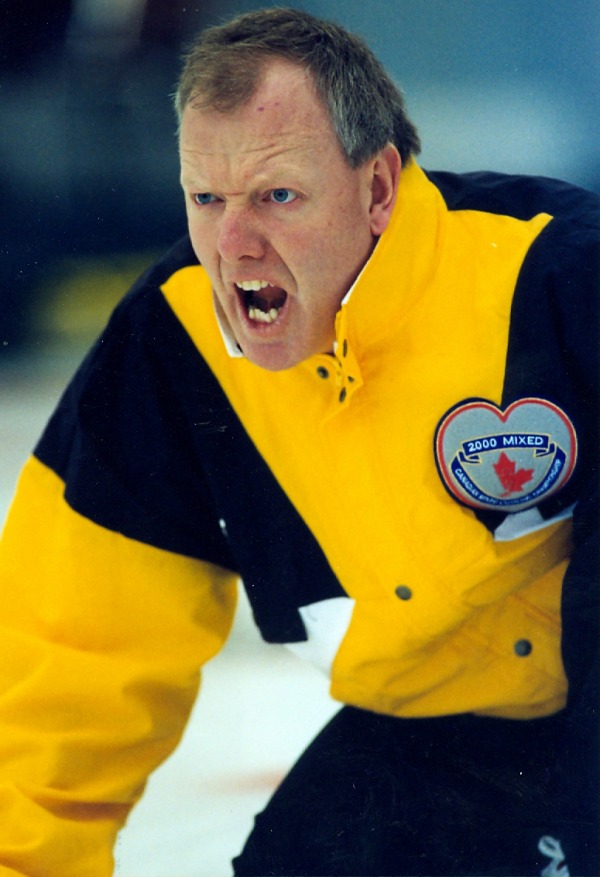
Russ Howard was a fierce competitor, known for his "roar" as he calls out his instructions to his teammates. In one game he actually lost his voice and had to resort to a radio to be heard. "It's important to me. You don't have to win, but you have to try harder".
Collection: Michael Burns Photography
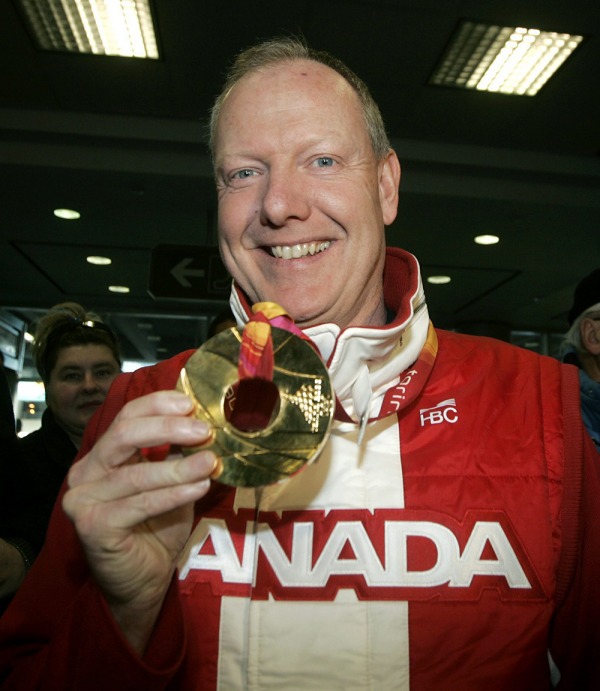
Russ called the shots for the Brad Gushue team at the 2006 Olympic Winter Games in Turin, helping the team from Newfoundland to win Canada's first gold medal in men's curling. He is respected as a leader both on and off the ice and is respected for the discipline and focus he brings to every game.
Collection: CP PHOTO/Nathan Danette
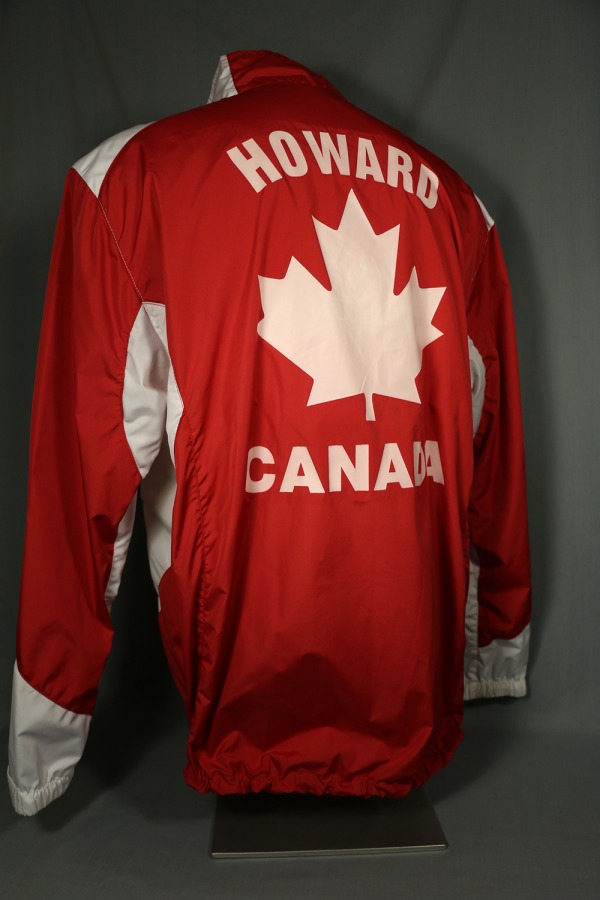
Russ Howard has proudly worn the Team Canada jersey representing this country at the World Championships and the Olympic Winter Games. He is known for his game of control, his touch and his finesse and for being able to channel great energy into a specific goal.
Collection: Private Collection: Russ Howard
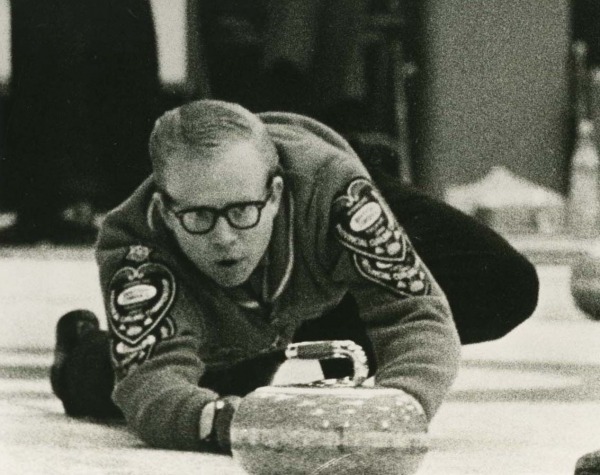
Ron Northcott, whose nickname was 'The Owl' because of his glasses, was a three time Brier winner. He was a tenacious player who thrived on clutch situations and was known for his power of positive thinking.
Collection: Canada's Sports Hall of Fame
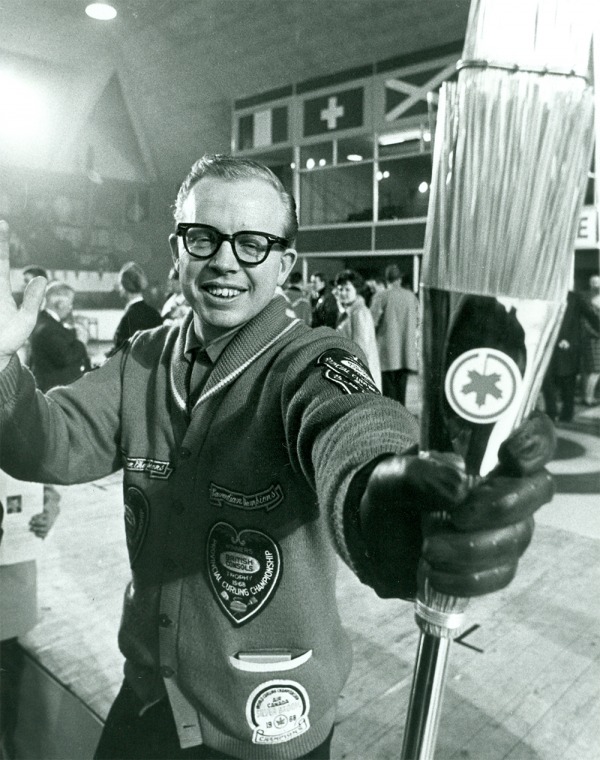
Along with the three Briers, Ron Northcott won the World Championships three times. Air Canada was the sponsor at this time and the trophy was a silver broom. Ron also received the Order of Canada. He was a player who played the game with great respect for it and his opponents.
Collection: Canada's Sports Hall of Fame
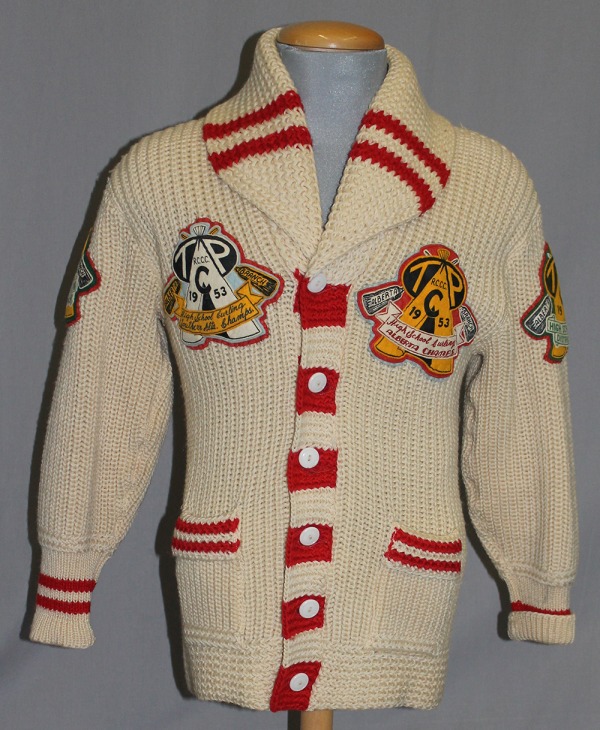
Ron Northcott started curling at a young age and skipped a team at the Canadian Schoolboy Championships. That started his competitive edge and the desire to win. He said on going to the Brier "...it's sort of always a dream just to go to the Brier. To win it is unreal".
Collection: Alberta Sports Hall of Fame & Museum
Previous Next
